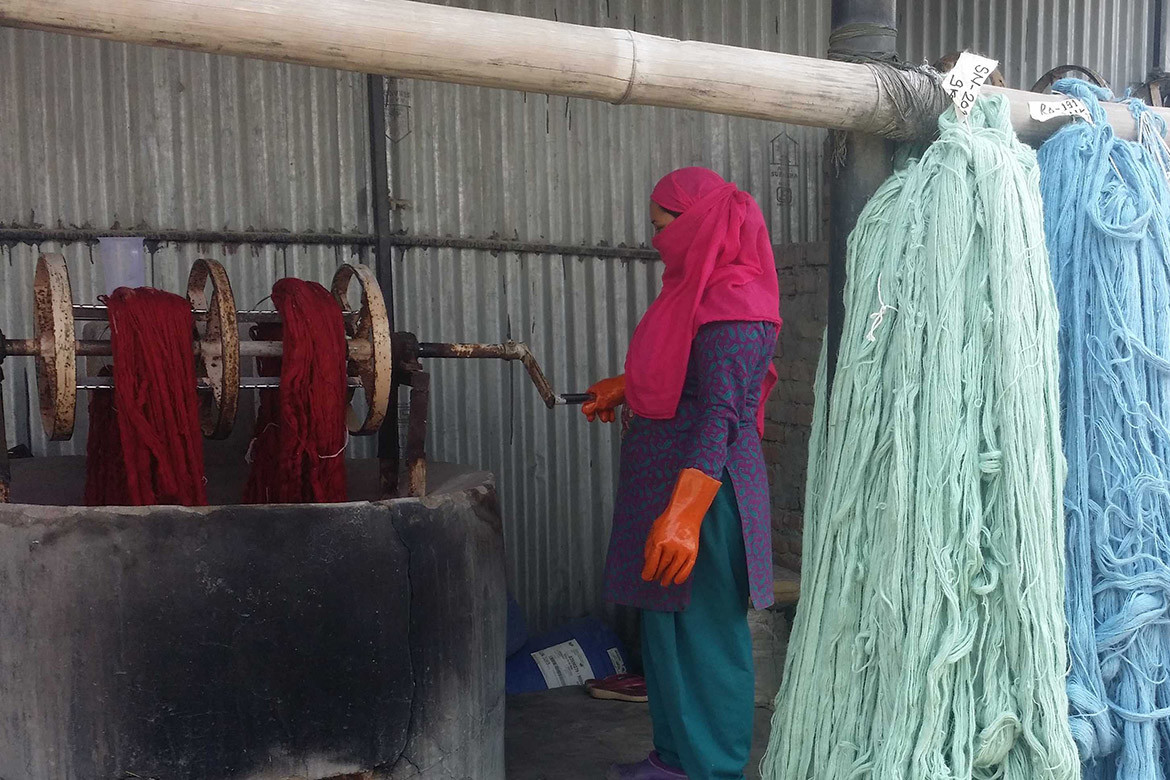
Built on ethical and environmental principles, Tappeti's unique hand-woven rugs are imbued with beauty.
Tappeti is known for the glorious aesthetic of its hand-made rugs, but the visual aspect is only one part of its beauty. Every rug crafted by Tappeti also embodies the practical expression of environmental, social and governance (ESG) principles.
Story continues below advertisement
ESG is rapidly becoming a core concern for the business world, which means there is an increasing focus on knowing where objects come from, who made them, and what was the social and environmental impact of the production process.
Not every product has complete transparency – elements for manufacture can come from far and wide in a complex supply chain that puts many decisions at arm’s length of a brand. Tappeti, however, has always maintained complete visibility and control of every dimension of the making of their rugs, explains Tappeti founder and CEO, Karinna Gobbo.
“We believe being environmentally sustainable and taking care of the people who apply their skills to craft our rugs is essential. I also take great pride in knowing exactly how our products are made. Our artisans are not an abstract labour force operating in a factory somewhere offshore, they are traditional artisans with generations of heritage who work in their traditional communities and are treated with the utmost respect for their exemplary skills.”
Story continues below advertisement
“It was so important to me when I started Tappeti that we operated ethically in every way,” she says.
The hand-knotting, hand-looming and other heritage techniques used by Tappeti’s craftspeople are highly prized and properly rewarded.
Story continues below advertisement
“Our weavers in Nepal are founding members of the Care & Fair organisation, a wonderful initiative with a focus on healthcare and education for the families of craftspeople within the hand-knotted rug industry across the region,” Gobbo says.
The organisation seeks fair wages and to increase education, abolish illegal child labour and create better living conditions, providing affordable health care and free ambulance services.
Environmentally, Tappeti treads lightly in its sourcing and process. Natural fibres including hemp, silk and wool are procured from responsible sources. The Tibetan wool used in hand-knotted rugs, for example, comes from the Changpel sheep, a breed belonging to the peoples of the mountainous regions of Tibet.
“It is incredibly soft, making it an ideal fibre to craft our pieces from,” Gobbo says.
“It is richer in lanolin than most wools with a superior tensile strength, slight lustre, extended durability, and it has a natural stain resistance due to the heightened lanolin content of the wool to keep the sheep warm and dry at altitudes above 11,000 feet.”
The toxins in dyes used by some textile manufacturers are also avoided by Tappeti. The yarns are pot-dyed, a centuries-old technique that gives a stronger colour and higher lustre than mass batch-dying in a factory. The small scale of the dye batches from pot-dying also means there is no waste, as yarns are dyed specifically for each bespoke, hand-made rug.
The dyes used are Achroma dyes, renowned for their focus on sustainability. They neither use nor release hazardous chemicals such as formaldehyde in their production and use less water during the dying process than many other dyes on the market.
The complete transparency and direct control of each aspect of the procurement and making process enables Tappeti to provide clients with complete assurance of the ethical provenance of every rug.
Another outcome of the careful and considered approach to making is that Tappeti products have an extended lifetime, ensuring the labour and resources involved are not taken for granted or treated as disposable.
Designer Kirsten Stanisich from Richards Stanisich has been working with Tappeti since Gobbo founded the company. She says the concept of ‘permanence’ is important to her, as it is a key element of sustainability.
“When we look at that idea of permanence, we are looking for things that won’t quickly look out of place in their colour or style, and also items that have innate qualities that make them durable and fit-for-purpose,” Stanisich explains.
Tappeti products have that long-term, lasting quality, she says. The beautiful quality of the hand-knotted hemps and hand-knotted wools makes a wonderful artistic statement.
The clients that Stanisich works with understand the benefit of foregoing ‘cheap’ wall-to-wall carpet of uncertain provenance, and instead spend the budget wisely on a bespoke, hand-made rug that will illustrate a space, not just cover the floors.
She believes the superior ethical and environmental principles that are part of the fabric of Tappeti also add an element of beauty that can be perceived on a subliminal level.
“When you bring these textiles into a space and they are that quality, hand-made product, we respond to it as humans. You can almost see how that rug has been put together from the wool by human hands.”
Stanisich says the Fair Trade dimension of decent treatment, wages and conditions for workers is so fundamental. It is something clients are increasingly interested in hearing about also. “It’s so important, [how workers are treated] and is something that is in all of our lives and all of the products we have. It is about not just thinking of suppliers as contracts but seeing them as part of our commercial family and ensuring we are looking after people.”
Tappeti
tappeti.com.au